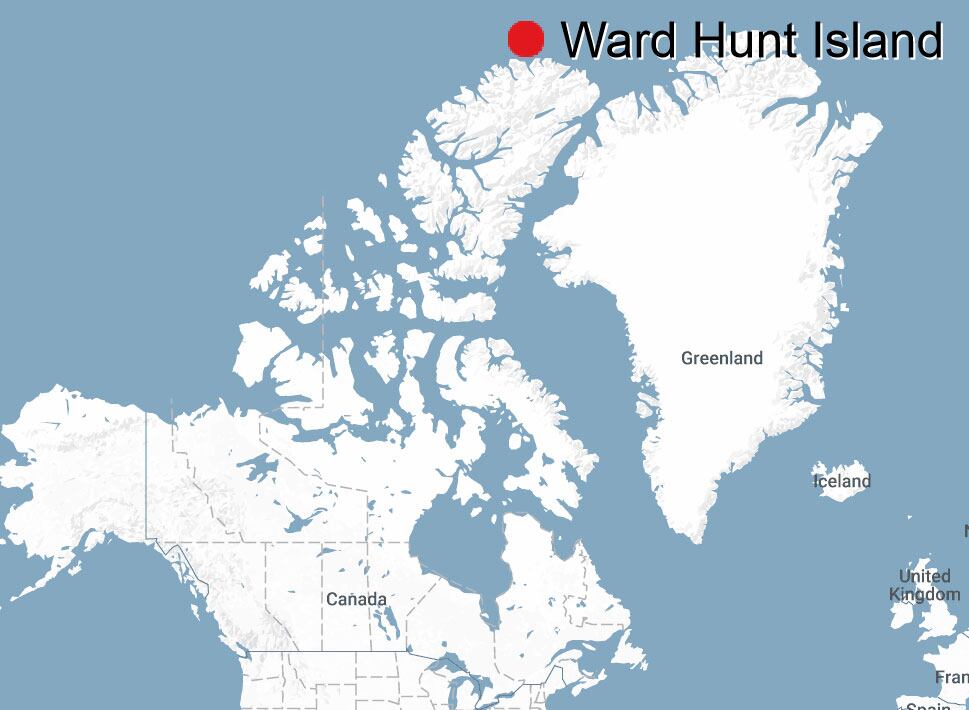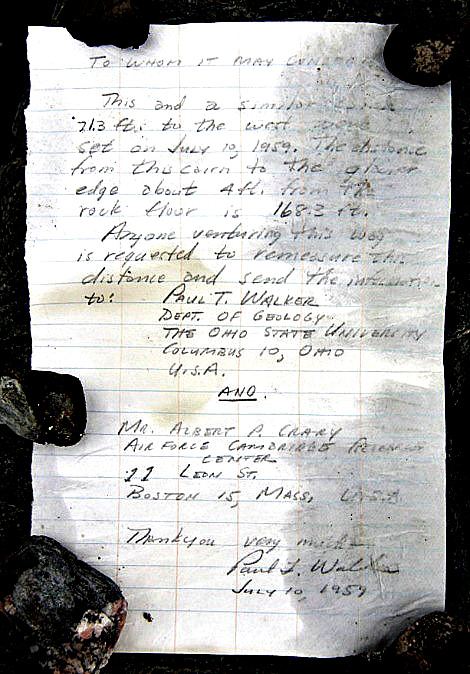Bottled Notes & Climate Change
Ward Hunt Island Expedition, 1959 (credit: Wikicommons)
You've read stories about some guy stranded on a desert island tossing bottle into the ocean with a note hoping to be rescued. It isn't obvious that a bottled note might alert the future on climate change in the Arctic.
In 1959, two Canadian investigators, Albert Crary and Paul Walker, were on an expedition to Ward Hunt Island in Canada's high Arctic. They finished their glacial measurements, built a rock cairn, wrote a note describing the environmental conditions there, and put the message into a bottle with instructions for anyone who might find it in the future. They asked any discoverer to record the changes they observed now and mail any new measurements to designated addresses.


Ward Hunt Island Expedition (credit: Wikicommons) and 1959 Arctic Message (credit: Wikicommons & Laval University, Canada)
It would be 54 years before the rock cairn with its protected message would be rediscovered and changes to the landscape, if any, be recorded. The letter was discovered by another Canadian research team led by a Laval University biologist who retrieved it. In the intervening years, glacier on Ward Hunt Island had receded more than 325 feet. The original glaciologists had anticipated climate change long before the term was know or recognized.
IN 1959, few people thought about climate change or stories ice might tell us about the past, present, and future. The two young explorers had left a bottled message and a warning of what was to come.
WHB